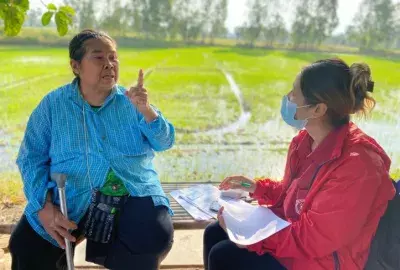Error message

For centuries, farmers in the mountainous region of mainland Southeast Asia have practiced shifting cultivation, with plots of land cultivated temporarily and then allowed to revert to secondary forest for a fallow period. Today, more than one million hectares have been converted to rubber plantation. By 2050, the area under rubber trees in the montane regions of Cambodia, Laos, Myanmar, Thailand, Vietnam, and China's Yunnan Province is predicted to increase fourfold. Preliminary research suggests this massive land-use change could lead to drier conditions at the local level plus surface erosion, loss of soil quality, sedimentation and disruption of streams, and risk of landslides. And it appears that when primary or secondary forests are converted to rubber, carbon emissions are likely to increase. Despite environmental concerns, both local farmers and outside entrepreneurs are likely to continue expanding rubber plantations because of high economic returns. Production systems that provide the best balance between economic return and environmental sustainability are needed to improve the long-term outlook for the region.
The views expressed in this publication are those of the authors and not necessarily those of the Center.
For centuries, farmers in the mountainous region of mainland Southeast Asia have practiced shifting cultivation, with plots of land cultivated temporarily and then allowed to revert to secondary forest for a fallow period. Today, more than one million hectares have been converted to rubber plantation. By 2050, the area under rubber trees in the montane regions of Cambodia, Laos, Myanmar, Thailand, Vietnam, and China's Yunnan Province is predicted to increase fourfold. Preliminary research suggests this massive land-use change could lead to drier conditions at the local level plus surface erosion, loss of soil quality, sedimentation and disruption of streams, and risk of landslides. And it appears that when primary or secondary forests are converted to rubber, carbon emissions are likely to increase. Despite environmental concerns, both local farmers and outside entrepreneurs are likely to continue expanding rubber plantations because of high economic returns. Production systems that provide the best balance between economic return and environmental sustainability are needed to improve the long-term outlook for the region.
The views expressed in this publication are those of the authors and not necessarily those of the Center.







